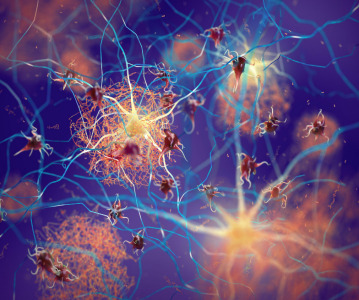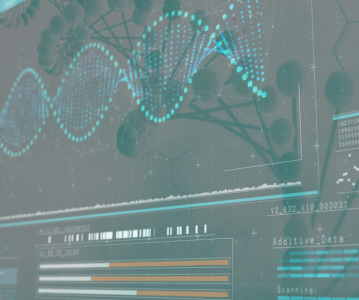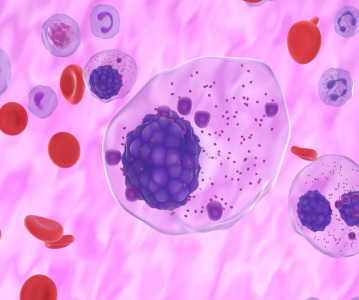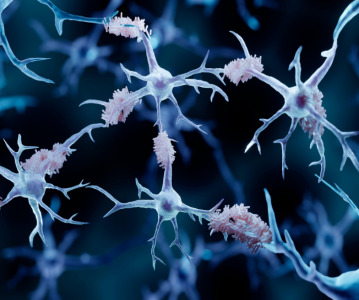3D Model Evaluates Cancer Progress

A new application report** from AMSBIO introduces a more predictive and realistic model for early-stage drug screening of cancer therapeutics.
The report shows that incorporating vascular and stromal cells with breast cancer tumour spheroids allows them to more closely mimic the extracellular environment, cellular architecture and behaviour of actual tumors; this triculture promotes growth, invasion and endothelial recruitment.
Current 2D models for evaluating breast cancer progression do not provide a comprehensive, physiological approach to modeling the complex tumour microenvironment. 3D Tumour spheroids mark a significant advance over such 2D models in mimicking tumour physiology: like tumors, spheroid cultures exhibit cell-cell bond formation, comparable morphology, elevated cell survival and proliferation in their outer layers, while in the inner layers, they have reduced proliferation rates and a hypoxic core.
But while such Multi-Cellular Tumor Spheroids (MCTS) do provide a more physiological tumour model than 2D, other cell types are also essential for tumour behavior and cancer progression. Tissue vasculature provides a critical component, given the metabolic requirements of a growing tumor and known tumor-vascular interactions: so incorporating endothelial tubules with the MCTS adds interactions between vascular networks and growing tumors to the model. At the same time, stromal cells promote cell proliferation, dissemination, and drug resistance during cancer development.
In the report, a novel 3D spheroid triculture model for evaluating breast cancer progression is described. In this model three different cell types are cultured together: a breast cancer cell line, together with human umbilical vein endothelial cells [HUVECs] and human adipose-derived mesenchymal stem cells [hMSCs] as an in vitro model for breast cancers in drug screening studies.
The proper physiology for each of these cell types is promoted using extracellular matrix proteins; and their activities and interactions assessed. The report demonstrates that in this triculture system, breast cancer MCTS exhibit cell-cell interactions with endothelial tubules and stromal cells, and there is an increase in both cell proliferation and invasion over the standard spheroid monoculture model.
To download a copy of this application report, click here.
Related News
-
News BioNTech to begin mRNA vaccine manufacturing in Rwanda by 2025
German biotechnology company BioNTech has stated their intentions to begin production at their mRNA vaccine factory in Rwanda by 2025, which will mark the first foreign mRNA vaccine manufacturing site on the continent of Africa. -
News Identifying Alzheimer’s Disease biomarker proteins with whole blood tests
A University of Manchester spin-out pharmaceutical company, PharmaKure, has reported successful study results for the quantification of Alzheimer’s Disease biomarker proteins with a whole blood test. -
News Bill & Melinda Gates Foundation to boost mRNA vaccine initiatives in Africa with USD $40m
To address vaccine inequality and accessibility issues, the Bill & Melinda Gates Foundation aims to deliver USD $40m to various biotech companies and vaccine manufacturers in support of mRNA vaccine development. -
News CPHI Podcast Series: Exploring neurological frontiers in Alzheimer's and beyond
The next episode of the CPHI Podcast Series delves into the science and background behind some recent developments in the field of Alzheimer's disease and neurological disorders. -
News Is patient centricity the future of pharmaceutical manufacturing?
In this interview with Sandra Sánchez y Oldenhage, President of PharmAdvice, she speaks to the importance of considering patients in the manufacturing stages of the pharmaceutical supply chain, and how it can redefine healthcare. -
News CPHI Podcast Series: How to leverage AI for Drug Discovery
Artificial intelligence is the topic of debate in the latest episode from the CPHI Podcast Series, where Digital Editor Lucy Chard speaks with Bill Whitford of DPS Group about the integration of AI in healthcare. -
News Pfizer forges ahead with blood cancer therapy after approval from FDA
Pfizer gains accelerated approval from the US FDA for their new bispecific antibody therapy for multiple myeloma, set to address an unmet need for patients. -
News Alzheimer's drug donanemab deemed effective in landmark clinical trial
Results from the TRAILBLAZER-ALZ 2 Randomised Clinical Trial into the use of donanemab to treat early symptoms of Alzheimer’s disease have been analysed.
Position your company at the heart of the global Pharma industry with a CPHI Online membership
-
Your products and solutions visible to thousands of visitors within the largest Pharma marketplace
-
Generate high-quality, engaged leads for your business, all year round
-
Promote your business as the industry’s thought-leader by hosting your reports, brochures and videos within your profile
-
Your company’s profile boosted at all participating CPHI events
-
An easy-to-use platform with a detailed dashboard showing your leads and performance







